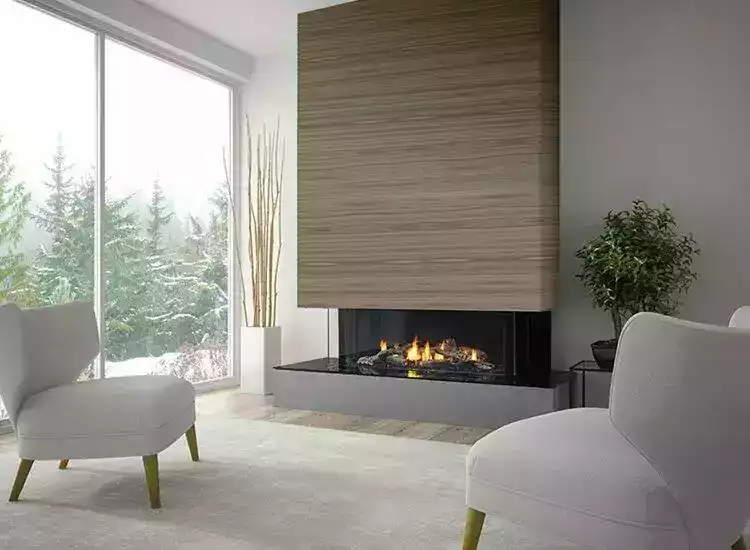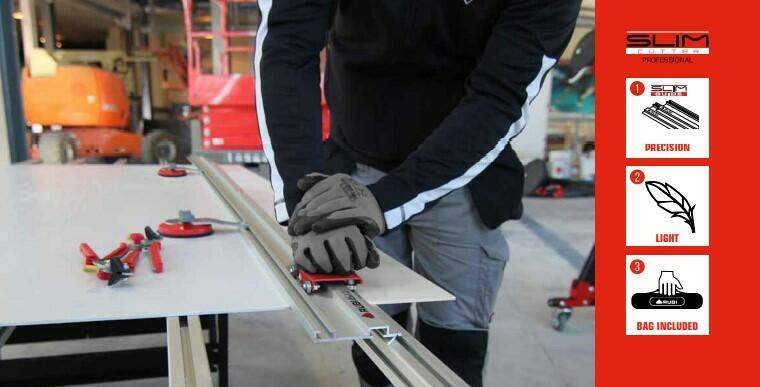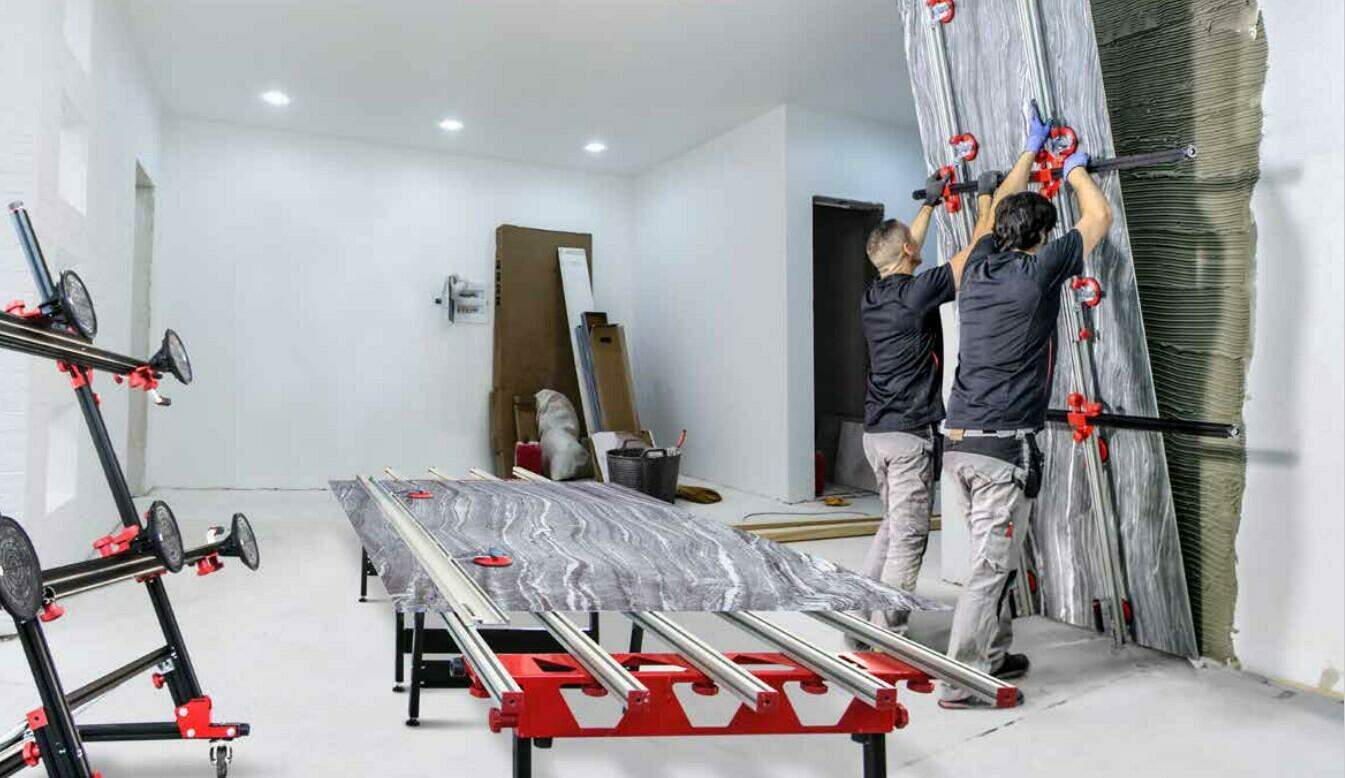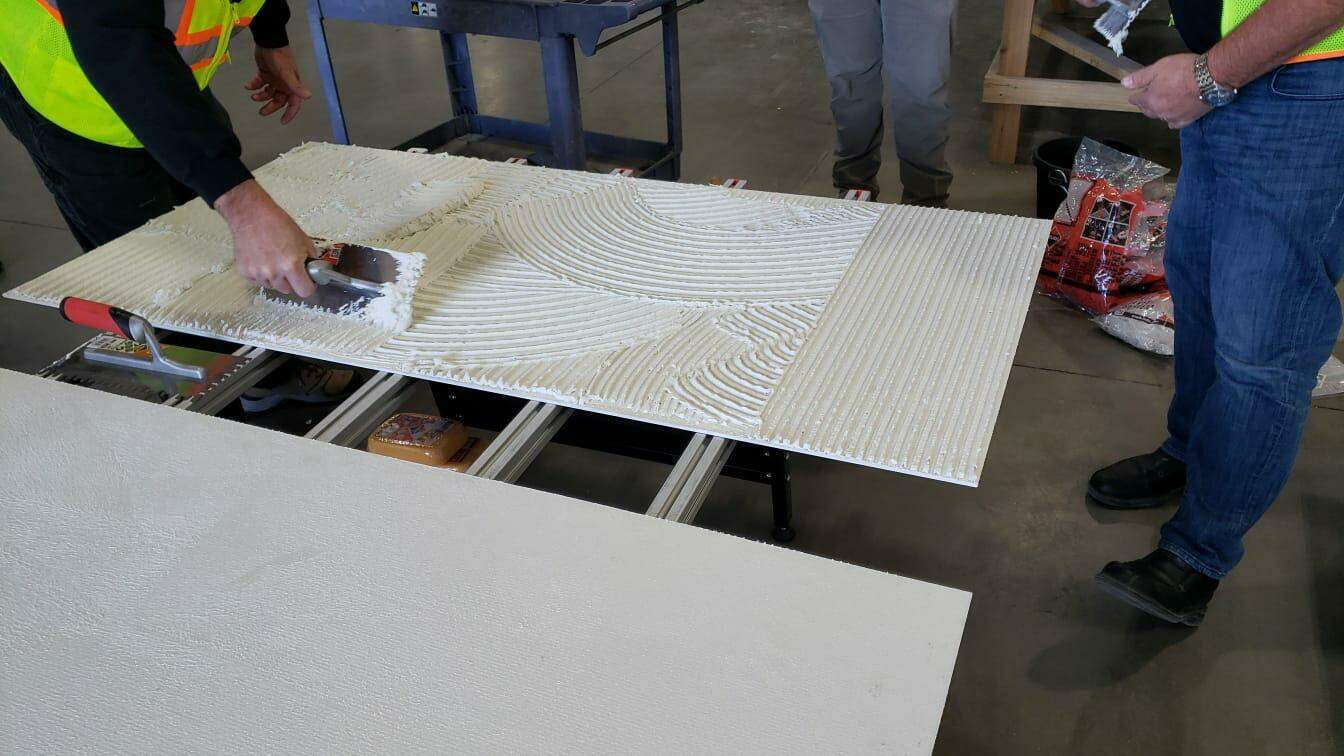If you want to create a unique aesthetic, you might consider recommending rough texture large format tile for your next project. There’s an undeniable trend emerging in the tile industry. Nowadays, the use of large format tiles, aka any tile with an edge larger than 15 inches, is explosively popular!
Despite their growing popularity, however, large format tiles present unique installation challenges. For instance, they need an even flatter substrate compared to standard tile. There’s also an increased chance of lippage. For these reasons, it’s important to understand that there are different techniques required for working with the material.
To learn more about working with rough texture large format tile, continue reading.
To Rough or Not to Rough?
Let’s begin by talking about texture. There are many elements to consider when recommending tile. For instance, clients must consider the color, pattern, size, and type of tile. They must even consider the type of grout.
These are all important elements. However, the texture of the tile is also important.

Clients can choose either a rough or smooth tile finish. This selection will have a significant impact on the look and performance of surfaces. For example, a smooth tile is slick. However, it’s easier to clean. Conversely, it’s a bit more challenging to maintain textured tile. Dirt likes to cling in its nooks and crannies.
The rougher the surface, the more challenging it is to maintain. You can recommend a bristle brush to help your clients get into all the nooks of textured tile. While textured tile is harder to clean, it also does a better job of hiding dirt. Clients won’t notice dirt or discoloration as fast with rough tile.
Textured tile casts shadows. For this reason, dirt and debris blend right into the surface. Also, property owners don’t have to clean it often to keep it looking attractive.
Rough Tile and Customer Benefits
Smooth tile is glossy and opulent. Textured tile, however, has a more natural appearance. Nevertheless, it’s still compelling and interesting.
You might recommend smooth tile in areas where clients want a more upscale appearance. For instance, you might suggest a smooth tile for a large format tile bathroom tub or shower enclosure. Conversely, you might recommend textured tile to create visual appeal. For example, you could suggest that a client install textured tiles around their fireplace. Your suggestions will vary with projects. You can think about how tile feels to guide your recommendations.

It’s also important to think about the temperature of the tile. Smooth tile is typically cool or cold to the touch. Alternatively, a textured tile is warm and inviting.
Ultimately, the decision between smooth and rough tile comes down to your client’s tastes. Whatever they choose, they must keep their tile maintained.
Regular maintenance will preserve the beauty of their tile. However, it will also help to maintain the structural integrity of their home. For these reasons, routine cleaning is essential for maintaining tile.
Tile also needs deep cleaning from time to time. An occasional deep clean can make grout and tile look brand-new—greatly extending the life of surfaces.
Before You Get Started
When repairing a substrate, it’s important to use large format tile mortar. You may also hear contractors refer to this kind of mortar as medium-bed mortar. However, it’s also important to understand that large format tile mortar is for installing tile. Manufacturers do not design it as a medium for correcting problems with a substrate. As a result, they won’t work well for truing or leveling tile substrate surfaces. Nor are they effective at correcting problems with previous work.
Large format tile mortar isn’t for use where substrate variations exceed the limitations of mortar. Resultantly, it’s critical to prepare a substrate surface before installation.
Substrate preparation will improve the overall appearance of your project. For example, it will prevent or reduce cracking and lippage. For this reason, it’s important to grind high areas and patch low areas before the installation.
You should not begin the installation of large format floor tiles until the substrate is completely flat. A self-leveling underlayment can also help in this regard. You’ll also need to adjust your variance tolerance. For example, a tolerance of a quarter inch is acceptable within a 10-foot area using standard tile.
However, a maximum one-eighth inch variance is recommended for large format floor tiles within a 10-foot area. Furthermore, the variance should not exceed 1/16 of an inch in a 12-foot area.
Choosing the Right Mortar for Large Format Tile
It’s also helpful to use a dry set mortar made specifically for large format tile installation. This kind of mortar features non-slump properties.
The properties of this kind of mortar help to eliminate lippage. Large format tile mortar will help to promote a smooth, flat installation. It works with a variety of substrates.
Also, it’s helpful to use a 1/2-inch x 1/2-inch x 1/2-inch trowel for large format tile installation. Alternatively, you might use a 3/4-inch x 9/16-inch x 3/4-inch U-notch trowel.
The recommended mortar coverage is 80% for dry areas and 95% for wet areas. It’s helpful to back-butter the tile. This method will help you achieve the recommended mortar coverage.
The trowel ridges for mortars should also flow in a single direction without swirls when installing large format tiles. It would help if you also collapsed the ridges by rocking the tile back and forth against them during installation.
Working With Large Format Tile
The biggest challenge of working with a large format tile is its weight. The size and weight of the tiles make them cumbersome. As a result, it can prove challenging to transport and handle large format tiles. For this reason, we developed the Slab System solution and now available across the United States from RUBI Tools USA.
When installing large format tile on walls, try to source mortar with exceptional sag resistance. In some instances, available mortars do not have enough sag resistance to hold oversized tiles in place. In this case, you’ll need to use a mechanical support system, such as leveling system or spacers from RUBI Tools. The system will hold the tiles in place until they are set.
When installing large format tiles, it’s important to follow the manufacturer’s recommendations for mortar open time and sag resistance.
Large format tile work is challenging. It’s important to have patience when working with the material. Accordingly, you must give yourself time to develop experience and success with large format tile installations.
A Few Tips and Tricks for Working with Large Format Tile It can prove challenging to create an integrated design using a large format tile. For instance, you may want to use the material to create a herringbone or brick pattern offset.
However, when making this kind of intricate pattern, it’s important to understand that large format tile exaggerates lippage. Also, you must consider that there are more corners to align during an intricate installation.
Furthermore, some large format tiles have greater facial warpage. This characteristic can make it challenging to create an even, flat surface. For this reason, at RUBI Tools, we developed several mechanical lippage tuning systems to achieve the desired outcome. Our mission of making available to the professional setter all the possible tools; we have 3 different systems to choose from: Tile Level, Tile level Quick, and DELTA Level System.
Also, look for a complete mortar installation system when installing a large format tile. You’ll want to find a mortar that’s easy to mix, spread, bed, and support. This kind of high-quality mortar is usually creamier and fluffier than standard mortar. For this reason, we strongly suggest the use of our RUBI mortar Mixers so you and your team achieve the best mixture without much effort.
When it comes to dry-cut large format tile, it’s also more challenging to score it and cut it when dealing with slab sizes. Depending on the tile material, standard tile cutting practices may leave an uneven edge. For this reason, at RUBI, we developed the RUBI Slim Cutter for slabs, with special guides that will help you score & cut, and then separate them with our SLIM Separator as an auxiliary separator on large format tiles.
For this reason, and as a professional installer, it’s a good idea to invest in a high-quality RUBI wet saw when working with large format tiles. We strongly recommend our RUBI TC-125 kit for our circular electric saw. Always take your time when making wet cuts. Prepare your working area and place your saw in a proper space where water and electricity are handy. You will see how the more practice and experience you get will make future cuts easier and better each time. Materials can be tricky, so study well the material to be cut and do a few practices runs before cutting your final piece.


We hope you are able to send us your future projects and share your work with us in our social media platforms. Send us a few pics to be feature with projects where you used or recommended rough surface large format tiles. Until next time!



Post a comment